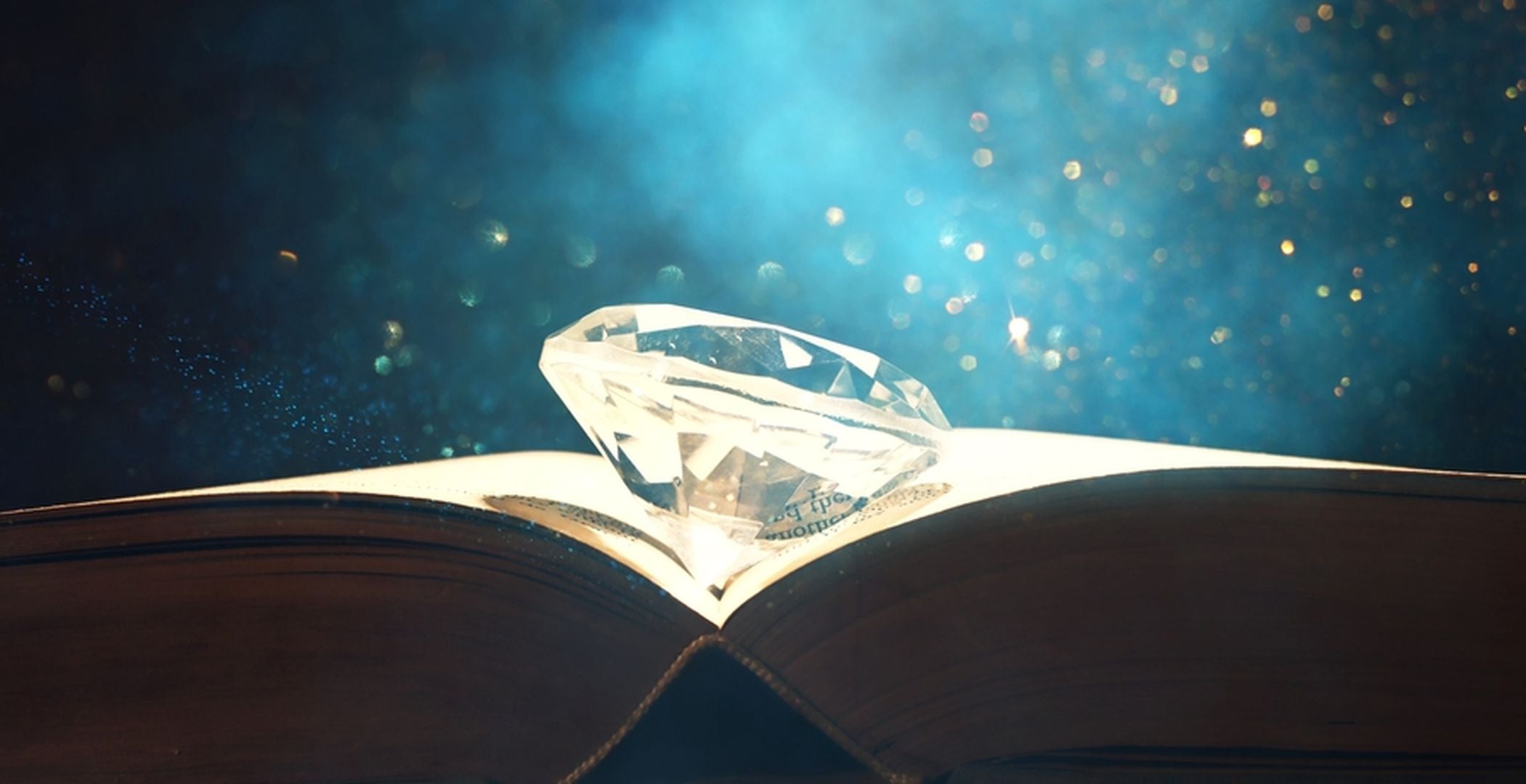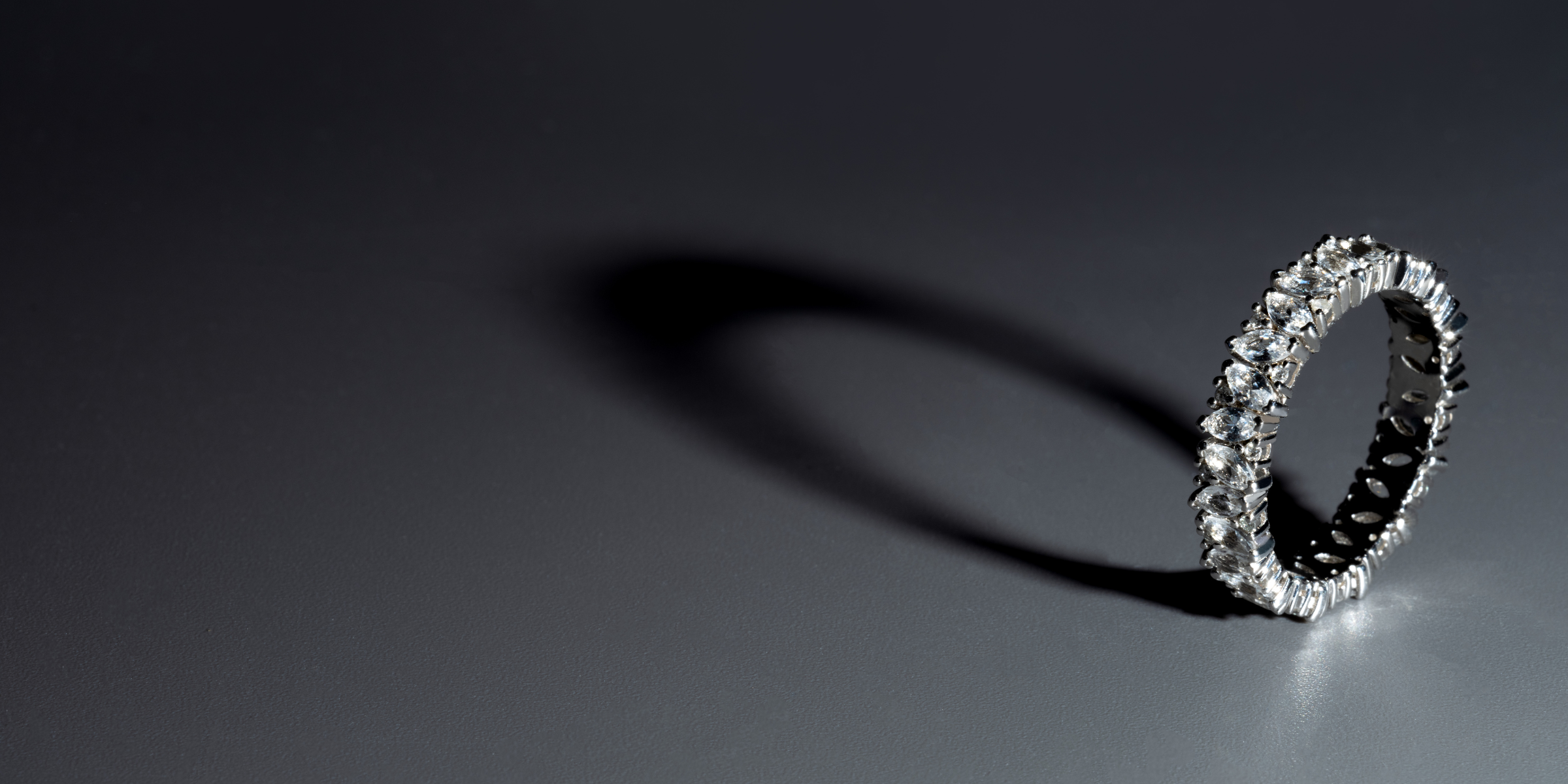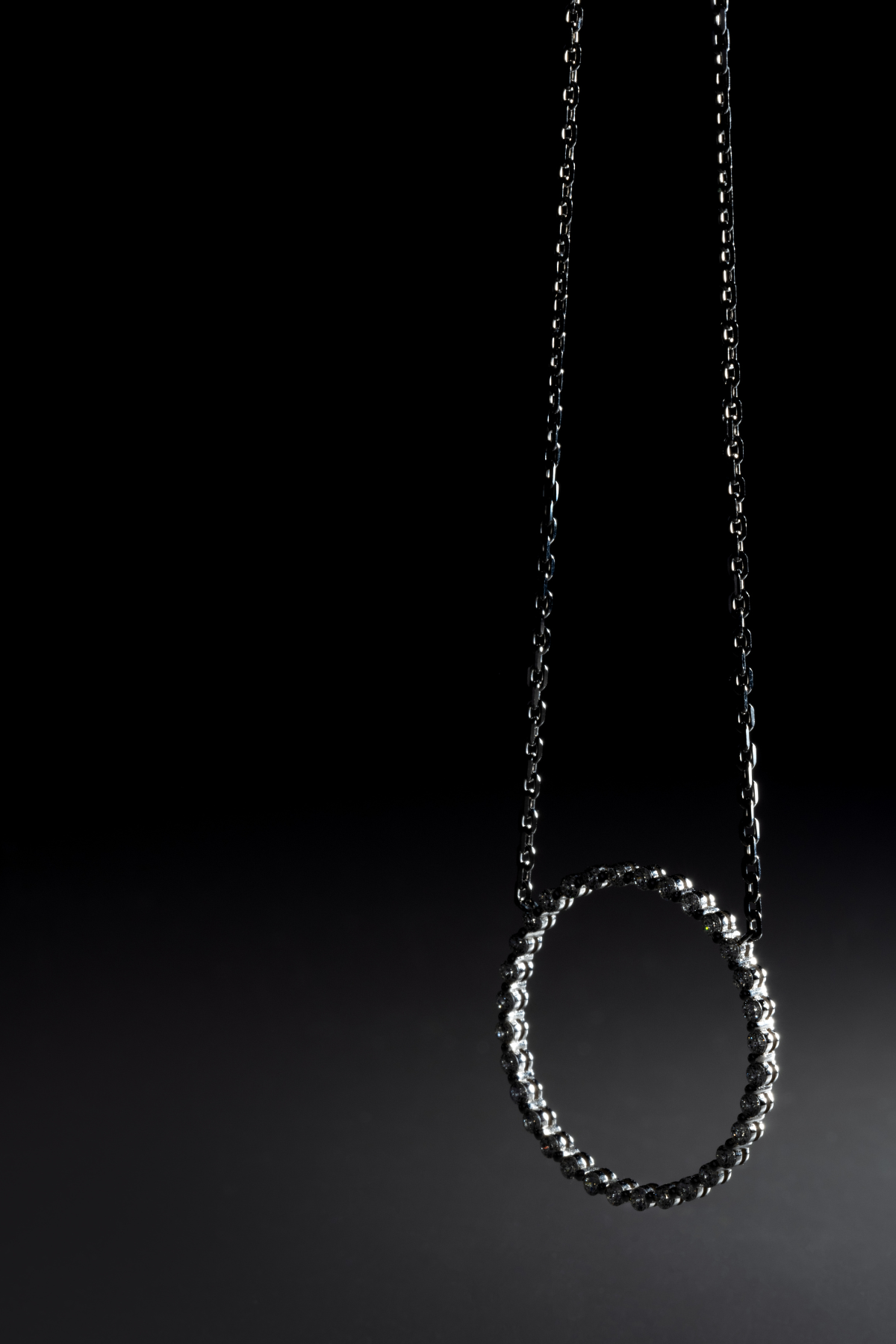
The earliest recorded use of diamonds in jewellery dates back to ancient India, where they were first mined around 800 BC. The Hindus believed that diamonds were created when bolts of lightning struck rocks, and they valued them for their spiritual and mystical properties. Diamond mining was a lucrative business in India, and diamonds were traded along the Silk Road to China, where they were also highly prized.

In Europe, diamonds first appeared in jewellery during the Middle Ages

They were primarily used in royal and religious settings, where they were set into crowns, sceptres, and other ceremonial objects. Because diamonds were rare back then and expensive, they were considered a luxury reserved only for the highest classes of society.

During the Renaissance, diamonds became more widely available due to increased mining in India and the discovery of new diamond deposits in Brazil. As a result, they began to appear more frequently in jewellery worn by wealthy merchants and aristocrats. This era also saw the development of new diamond cutting techniques, which allowed diamonds to be shaped and polished into more intricate and elaborate designs.

The 18th and 19th centuries were a golden age for diamonds in jewellery
The discovery of new diamond deposits in South Africa led to a surge in diamond production, and diamonds became more affordable and accessible to a wider range of consumers. This period also saw the rise of the diamond engagement ring, which became a popular symbol of love and commitment.
One of the most famous diamonds from this era is the Koh-i-Noor, which means "Mountain of Light" in Persian. The diamond is believed to have been mined in India in the 13th century and was owned by several Indian rulers before it was seized by the British East India Company in the 19th century. The diamond was later presented to Queen Victoria and is now part of the British Crown Jewels.

In the early 20th century, diamonds continued to be a popular choice for engagement rings and other types of jewellery
The De Beers mining company, which controlled a significant portion of the world's diamond production, launched an advertising campaign in 1947 that coined the slogan "A diamond is forever." This campaign helped cement the idea that diamonds were an essential part of any romantic relationship and contributed to the enduring popularity of diamond engagement rings.

Today, diamonds continue to be a popular choice for jewellery, and new cutting and polishing techniques have made it possible to create even more intricate and innovative designs… but perhaps the biggest change the industry has ever seen is continuing to occur even as you read this blog entry…
The diamond industry has become more socially conscious, with many companies emphasizing ethical sourcing and sustainable mining practices
In recent years, lab-grown diamonds have also become a popular alternative to mined diamonds. Lab-grown diamonds - also known as created diamonds, grown diamonds, and cultured diamonds - are created in a laboratory using advanced technology and have the same physical and chemical properties as mined diamonds.

In fact, not only are lab-grown diamonds the very same diamonds as mined diamonds, but they’re routinely better, with only 2% of the mined diamonds reaching the superior status of lab-grown.
Luxury jewellery history re-written with the emergence and growing market share of lab-grown diamonds
Diamonds have long been a symbol of luxury, romance, and success. However, the process of mining diamonds has long been controversial, with concerns about human rights abuses, environmental damage, and the exploitation of labour. In recent years, a new technology has emerged that promises to revolutionise the diamond industry: lab-grown diamonds.

Lab-grown diamonds are exactly what they sound like: diamonds that are grown in a laboratory, rather than mined from the earth. The process of growing diamonds in a lab has been around for decades, but until recently, it was prohibitively expensive and produced only small, low-quality diamonds.
In the early 2010s, however, advances in technology began to make lab-grown diamonds more viable
Companies began to invest in the development of new techniques and equipment that could produce larger, higher-quality diamonds at a lower cost.

Today, lab-grown diamonds are produced using two main methods: High Pressure-High Temperature (HPHT) and Chemical Vapour Deposition (CVD). Both methods use a small diamond "seed" as a starting point and then use either heat and pressure or a gas mixture to grow the diamond layer by layer.
The resulting diamonds are chemically and physically identical to mined diamonds, and they are graded using the same criteria as mined diamonds. However, lab-grown diamonds are typically priced more fairly than their mined counterparts, which has made them an increasingly popular choice for consumers.

One of the key advantages of lab-grown diamonds is that they are much more environmentally friendly than mined diamonds

The process of mining diamonds is notoriously destructive, with massive amounts of earth and rock displaced to access diamond deposits. The mining process also requires large amounts of water and energy and can cause significant air and water pollution.

In contrast, lab-grown diamonds have a much smaller environmental footprint. While they do require energy to produce, the process is much more efficient and produces far less waste than mining. Lab-grown diamonds also don't carry the same ethical concerns as mined diamonds, which are often associated with human rights abuses and exploitative labour practices.
In addition to their environmental and ethical advantages, lab-grown diamonds are also changing the jewellery industry in other ways. For one, they have disrupted the traditional diamond supply chain. Historically, diamond mining was controlled by a handful of companies that controlled the supply and pricing of diamonds. But with the rise of lab-grown diamonds, new players have entered the market, which has increased competition and driven down prices.
Lab-grown diamonds have also opened up new design possibilities for jewellery designers. Because lab-grown diamonds can be produced in a wider range of colours and shapes than mined diamonds, designers are able to create more unique and intricate pieces. And because lab-grown diamonds are less expensive than mined diamonds, designers have more freedom to experiment with new materials and techniques.
However, despite their many advantages, lab-grown diamonds still face some challenges
For one, there is still a lot of confusion and misinformation around lab-grown diamonds, which can make it difficult for consumers to make informed purchasing decisions. Some consumers still believe that lab-grown diamonds are "fake" or of lower quality than mined diamonds, which is not true.
Another challenge is that lab-grown diamonds are still a relatively new technology, and there is still much research and development that needs to be done. However, whilst this is a challenging area, the good news is the results yielded should only be a net positive for diamonds in luxury jewellery, and best of all, the planet’s well-being.

As the lab-growing of diamonds viable for luxury jewellery is a relatively new science, it’s also still very much a changing one
Methods are constantly being researched and introduced to not only further lower the already low (relative to mining for diamonds) carbon footprint of lab-grown diamonds, but also to make lab-grown diamonds carbon negative.
As it stands today, many labs around the world are already growing diamonds with carbon neutral status, utilising things like renewable solar power to aid in the growth of diamonds. And perhaps most awe-inspiring? There is a lab in the UK that can extract excess carbon from the atmosphere and use it to create diamonds! The science fiction of our childhoods is truly becoming the reality of today.
In conclusion, lab-grown diamonds are a promising new technology that has the potential to revolutionise the diamond industry. They offer a more environmentally friendly and ethical alternative to mined diamonds, whilst also opening up new design possibilities for jewellery designers.



